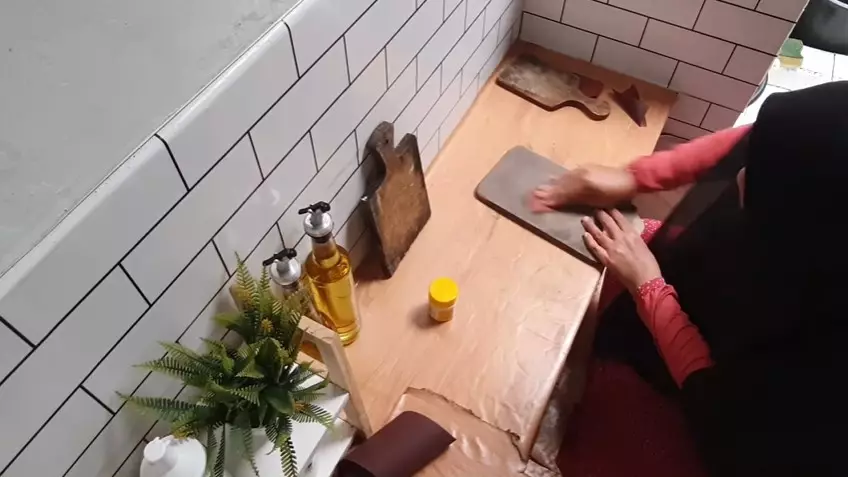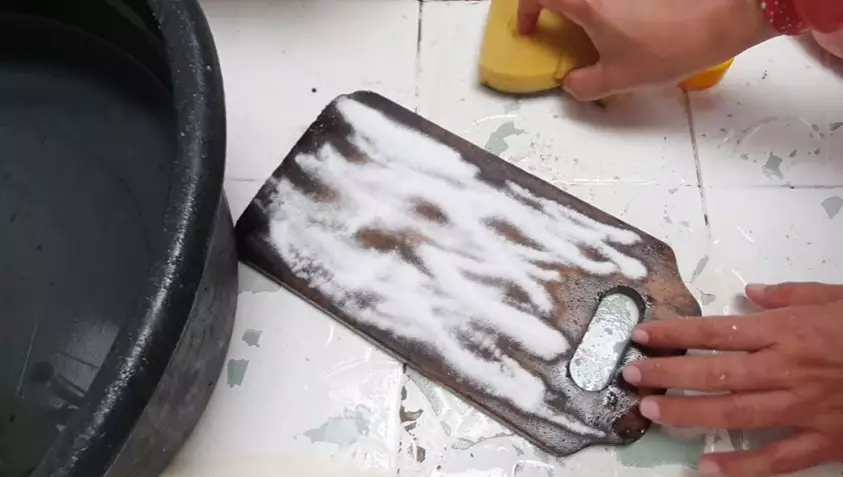Brilio.net - Cutting boards are one of the important kitchen utensils that make it easier to cut various ingredients, from spices, vegetables, to meat. On the market, cutting boards are available in various materials such as plastic, silicone, bamboo, and wood.
Wooden cutting boards are often a favorite choice because they are known to be strong, stable when used, and have an aesthetic appearance. In addition to being functional, the shape and color of wooden cutting boards are also suitable for beautifying the kitchen, especially those with a classic or vintage feel.
However, use without proper care can cause wooden cutting boards to change color and grow mold. If not cleaned immediately, the surface will turn black over time. Many people choose to throw away moldy wooden cutting boards, even though they can actually be cleaned, depending on the severity.
For newly emerged and not too widespread mold, stains can usually still be completely removed. While for parts that are old and quite severe, although they cannot be returned to their original cleanliness, the surface of the cutting board can still be cleaned to make it more suitable for use.
These tips for cleaning wooden cutting boards were once shared by netizens through Zulaikha Pratiwy's YouTube account. In her video, Zulaikha shows some of her moldy wooden cutting boards and shares how to clean them with simple tools and materials that are easy to find at home. The method is also quite practical and can be tried directly in the kitchen.
First, while the cutting board is still dry, rub the entire surface with sandpaper. After investigation, this sandpaper is able to scrape off stubborn stains that stick to the surface of the cutting board. After that, rinse the cutting board with hot water.

photo: YouTube/Zulaikha pratiwy
After being wet, the cutting board can be sprinkled with the first cleaning agent, namely baking soda. Scrub using a rough sponge to remove black mold stains. You can sprinkle baking soda several times until you feel the stains are lifted.
"If you don't have baking soda at home, don't worry, you can use table salt," he explained, quoted by brilio.net from YouTube Zulaikha Pratiwy on Monday (14/4).

photo: YouTube/Zulaikha pratiwy
If the stain is still very stubborn, you can rinse the cutting board with hot water once more. Next, sprinkle baking soda and pour the second ingredient, which is vinegar, over the entire surface of the wooden cutting board. Then, scrub again using a rough sponge until you feel the mold stain is gone.
Finally, rinse the cutting board using running water until there is no more baking soda and vinegar left. After the cutting board is clean, wipe the remaining water with a cloth, then dry the cutting board in the sun or next to a magic com that is on so that the heat can help dry the cutting board quickly.
"Cutting boards should be stored in a dry place, not in a humid place. If they are in a humid place, they will definitely grow mold very quickly. It is better to store them in a dry place, exposed to wind or sunlight," said Zulaikha.
Zulaikha also added, when the wooden cutting board is completely dry, you can smear it with a little coconut oil. This coconut oil is said to be able to help restore the color of a dull wooden cutting board to be beautiful again.

photo: YouTube/Zulaikha pratiwy
How, is it easy to clean?
Tricks to prevent wooden cutting boards from becoming dull and moldy quickly.To prevent wooden cutting boards from quickly becoming dull and moldy, there are several simple maintenance tricks that can be applied routinely:
1. Dry after washing.
After use and washing, make sure the cutting board is completely dry before storing. Do not leave it in a damp condition because it can trigger mold growth.
2. Don't soak it for too long.
Avoid soaking wooden cutting boards in water, especially for long periods of time. Water that seeps into the wood fibers will accelerate the weathering process and trigger mold.
3. Clean with natural mixture.
Every once in a while, clean the cutting board surface with a mixture of vinegar and water or lemon juice and salt. This combination helps kill bacteria and prevents mold from growing.
4. Dry by standing upright.
After washing, dry the cutting board standing up or leaning it vertically so that the remaining water can flow down and not be retained on the surface.
5. Brush with natural oil.
Use mineral oil, virgin coconut oil, or olive oil to coat the surface of your cutting board every few weeks. The oil coating helps keep the wood moist and prevents cracking or dulling.
6. Use different sides for different materials
To maintain cleanliness, use separate sides for raw ingredients (such as meat) and cooked ingredients or vegetables to prevent contamination.
(brl/lut)